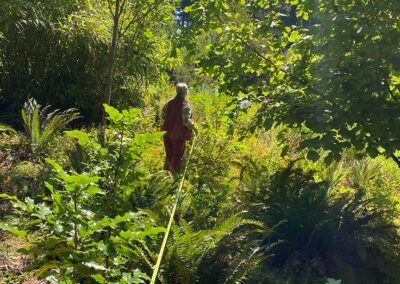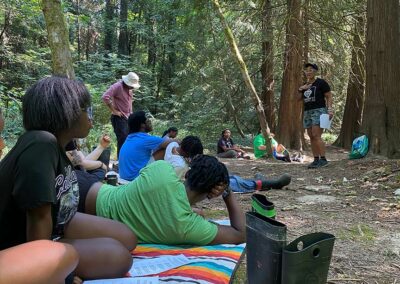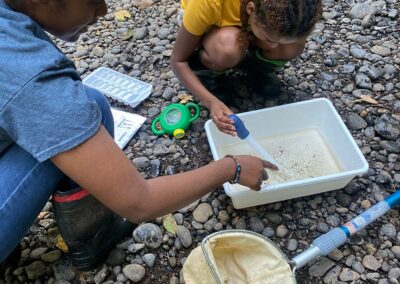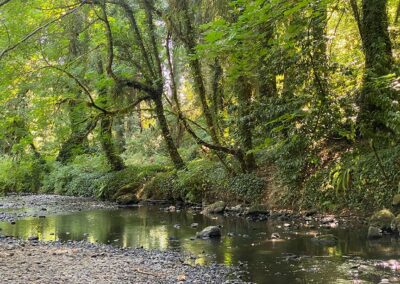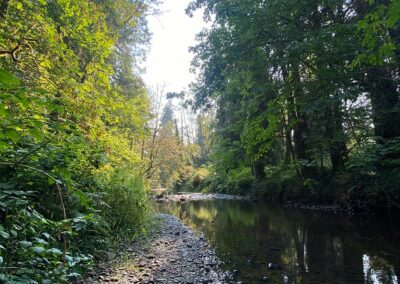My mind has been flooded with questions about how to strategize this work. There are so many ways to approach habitat restoration, but I believe the approach we are using to restore the ecosystem in the Back 5 is nothing short of remarkable. First, you must know that the intention of the Back 5 is not to restore it as quickly as we can. We could bring in heavy machinery and hire contractors and have the project completed by spring–but that isn’t the point. We are there to use this space as a hub for education while we remove invasives and replace them with natives. Relationships first. Education first. Connection first. The old saying goes “If you want to go fast, go alone. If you want to go far, go together.”
This summer we, alongside Johnson Creek Watershed Council, Wisdom of the Elders, the Blueprint Foundation, African Youth and Community Organization, and a dedicated group of volunteers, have cleared new trails, studied macroinvertebrates, hosted mindfulness workshops, completed plant transects, cleaned trash from the creek, harvested stinging nettle to make fermented nettle honey, and removed an absurd amount of invasive species. Soon we will begin planting more native species as the rainy season rolls in.
I want to extend a welcome invitation to get involved to support this project. If you would like to see more, I am co-hosting an event alongside Johnson Creek Watershed Council to tour the work we’ve been up to in the Back 5 on September 13th. Be warned though: we may ask that you pull a little ivy while you’re here.
– Jami LeBaron
